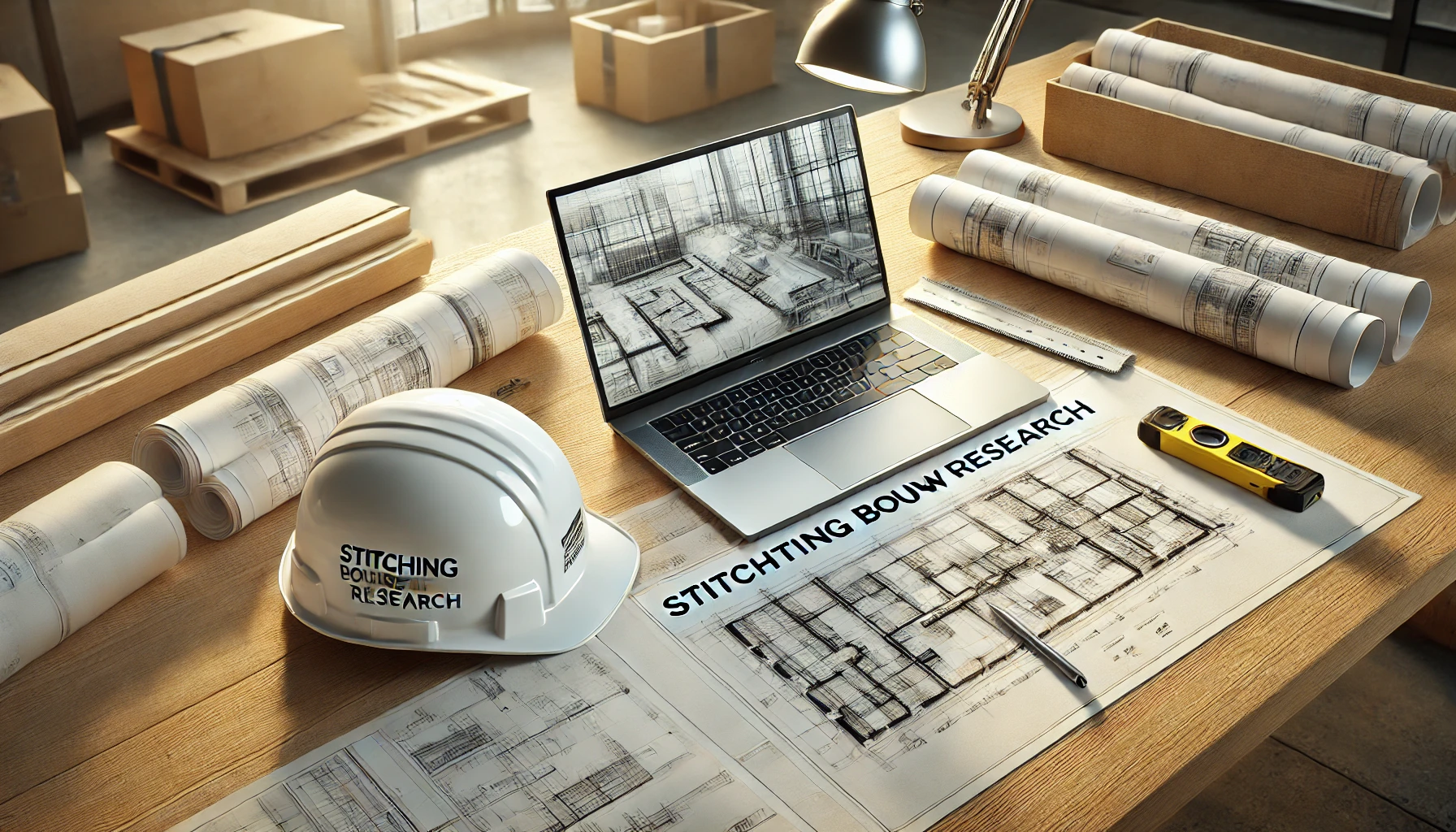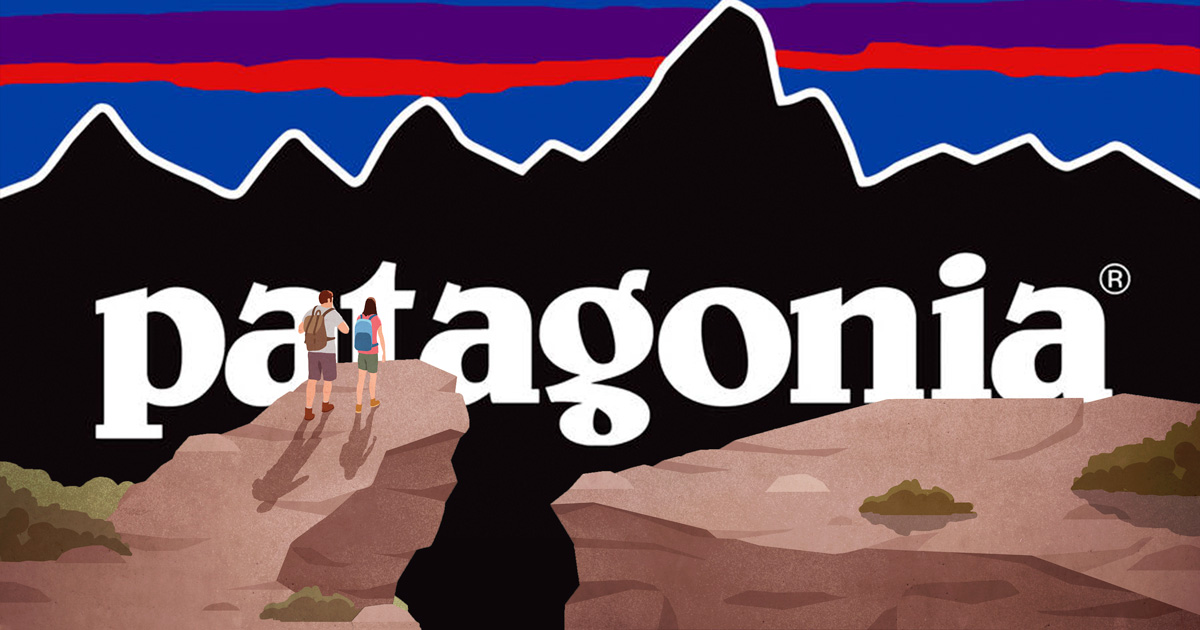REAL ESTATE
Stichting Bouwresearch: Revolutionizing Sustainable Construction in the Netherlands

Stichting Bouwresearch was a Dutch foundation dedicated to improving building quality through research and innovation. It played a major role in shaping sustainable construction practices in the Netherlands.
The foundation aimed to provide practical solutions for the construction industry. Its research focused on enhancing energy efficiency, durability, and environmental sustainability.
Stichting Bouwresearch collaborated with government agencies and private firms. It helped create guidelines that improved construction methods while reducing environmental impact.
Although the foundation no longer operates, its influence continues. Many of its standards remain in use, guiding modern building practices in the Netherlands and beyond.
History and Establishment
Stichting Bouwresearch was founded to support the Dutch construction sector. It focused on research that improved building safety, efficiency, and sustainability.
The foundation played a key role in developing national construction policies. It worked closely with architects, engineers, and developers to implement better building techniques.
Over the years, it became a trusted authority in the industry. Its research influenced regulations and helped shape the future of sustainable construction.
The foundation’s efforts ensured that buildings in the Netherlands met high standards. Its work laid the foundation for modern sustainable development practices.
Contributions to Sustainable Building
One of its major contributions was the National Package for Sustainable Building. This set of guidelines helped developers create environmentally friendly buildings.
The package introduced a structured approach to sustainability. It included both mandatory and flexible measures, allowing builders to adapt strategies based on project needs.
A major focus was energy efficiency. Stichting Bouwresearch provided recommendations on insulation, ventilation, and heating systems to reduce energy consumption.
It also emphasized sustainable materials. Research showed that using eco-friendly resources could lower carbon footprints and improve building longevity.
National Package for Sustainable Building – Key Features
| Category | Key Measures |
| Energy Efficiency | Better insulation, heat recovery systems |
| Water Management | Rainwater harvesting, low-flow fixtures |
| Material Use | Eco-friendly materials, recycling policies |
| Indoor Air Quality | Ventilation improvements, non-toxic paints |
This package became a benchmark for sustainable construction in the Netherlands. Many of its principles are still used in modern building projects.
Research and Innovation Initiatives
Stichting Bouwresearch focused on developing new construction techniques. Its studies helped improve building performance while reducing environmental impact.
One important area of research was heat loss in buildings. Studies showed that poor insulation led to high energy waste, prompting better insulation standards.
The foundation also explored alternative energy sources. It promoted the use of solar panels, geothermal heating, and other renewable solutions.
Innovative building materials were another focus. Stichting Bouwresearch encouraged the use of sustainable materials like recycled concrete and timber.
Collaboration with the Industry
The foundation worked closely with government agencies, construction firms, and research institutions. These partnerships helped implement better building regulations.
One of its key collaborations was with the Dutch Green Building Council (DGBC). Together, they promoted BREEAM-NL, a sustainability certification for buildings.
Construction companies benefited from its research. Guidelines provided by Stichting Bouwresearch helped builders meet modern environmental standards.
Its influence extended to policy-making. The foundation’s research was often used to shape national and European construction regulations.
Dissolution and Legacy
Stichting Bouwresearch was eventually dissolved. However, its contributions to sustainable construction remain relevant today.
Many of its guidelines are still in use. Builders, architects, and policymakers continue to apply its research to improve construction quality.
The foundation played a major role in promoting BREEAM-NL certification. This system remains one of the most widely used sustainability standards in the Netherlands.
Although it no longer exists, Stichting Bouwresearch left a lasting impact. Its work continues to shape sustainable construction practices in Europe and beyond.
Conclusion
Stichting Bouwresearch was a leader in construction research. Its work helped improve sustainability, efficiency, and safety in the building industry.
Through its initiatives, the foundation set new standards for eco-friendly construction. It encouraged the use of better materials, energy-saving techniques, and sustainable practices.
The impact of its work can still be seen today. Many of its guidelines continue to influence construction policies in the Netherlands.
Although the foundation no longer operates, its legacy lives on. Stichting Bouwresearch helped pave the way for a more sustainable future in building design and development.
FAQs
What was the main purpose of Stichting Bouwresearch?
Stichting Bouwresearch aimed to improve building quality by promoting research, innovation, and sustainable construction practices in the Netherlands.
How did Stichting Bouwresearch contribute to sustainability?
It developed the National Package for Sustainable Building, which provided guidelines for energy efficiency, eco-friendly materials, and better water management.
What was its role in BREEAM-NL certification?
Stichting Bouwresearch helped implement BREEAM-NL, a sustainability rating system that assesses and improves building environmental performance.
Why was Stichting Bouwresearch dissolved?
The foundation was dissolved due to restructuring, but its research and guidelines continue to influence modern construction policies.
How does Stichting Bouwresearch’s work impact today’s construction industry?
Its research on energy efficiency, material sustainability, and ventilation systems is still used to shape sustainable building regulations in the Netherlands.
REAL ESTATE
OpenHousePerth.net Donations: A Simple Way to Support Cultural Heritage

OpenHousePerth.net is a community-driven non-profit organization. It provides public access to unique buildings and spaces that are usually closed to visitors. The goal is to celebrate architecture, design, and cultural heritage in Perth.
Donations are essential to keep this initiative running. Since the program relies on volunteers and sponsorships, financial support helps cover event costs and logistics. Without donations, many of these events would not be possible.
By supporting OpenHousePerth.net, donors contribute to a broader mission. This includes educating people about architecture, inspiring creative industries, and connecting the community. A small donation can have a lasting impact.
Whether you are an individual or a business, your contribution makes a difference. From direct financial support to sponsorships and in-kind donations, there are many ways to help sustain OpenHousePerth.net.
What is OpenHousePerth.net?
OpenHousePerth.net is an annual event that allows people to explore remarkable architectural sites. These include heritage buildings, modern landmarks, and spaces designed by leading architects. It offers a unique experience that connects the public with the city’s design landscape.
This initiative is part of the global Open House program. Cities worldwide participate in similar events to promote local architecture and design. OpenHousePerth.net brings this concept to Perth, showcasing the city’s rich architectural heritage.
One of the key aspects of OpenHousePerth.net is accessibility. Most sites are open to the public for free, making it an inclusive experience for all. This is only possible because of the generous contributions from donors and sponsors.
Without financial and volunteer support, many of these locations would remain inaccessible. Donations ensure that OpenHousePerth.net continues to operate and expand its reach each year.
OpenHousePerth.net Donations – Why Your Support Matters
OpenHousePerth.net donations play a crucial role in keeping this community-driven event alive. As a non-profit initiative, it relies on financial contributions to organize and expand its programs. These donations help cover event costs, support volunteers, and ensure that unique architectural spaces remain open for public exploration. Without donor support, many of these experiences would not be possible.
By contributing to OpenHousePerth.net, individuals and businesses help promote cultural awareness and architectural appreciation in Perth. Every donation, whether big or small, directly impacts the success of the event, making it more inclusive and accessible for everyone. Supporting this initiative means preserving local heritage, inspiring creativity, and strengthening community connections.
Why OpenHousePerth.net Donations Matter?
Running large-scale public events requires significant funding. OpenHousePerth.net donations help cover essential costs such as permits, insurance, and event coordination. Without these funds, it would be difficult to organize and expand the program.
Volunteer support is another critical aspect. Many individuals contribute their time to guide visitors and manage event logistics. Donations help provide resources and training to ensure a smooth experience for both visitors and volunteers.
Financial contributions also help keep the event free or low-cost. This makes architecture and design accessible to a wider audience, including students, families, and tourists. The more support OpenHousePerth.net receives, the more inclusive and engaging the event can be.
Expanding the event is another benefit of donations. Additional funds allow for more locations, improved visitor experiences, and enhanced marketing efforts to reach a larger audience.
How to Donate to OpenHousePerth.net?
There are several ways to contribute to OpenHousePerth.net. The easiest method is through online donations. The official website provides a secure platform where individuals and businesses can make financial contributions.
Corporate sponsorships are another significant source of funding. Businesses can support the initiative by donating funds or sponsoring specific aspects of the event. This offers brand exposure and community engagement benefits.
In-kind donations are also welcome. Companies or individuals can provide resources such as printing services, event materials, or venue spaces. These non-monetary contributions help reduce overall costs.
For those who prefer active involvement, organizing fundraising events is another option. Local businesses, schools, and community groups can host donation drives to support OpenHousePerth.net.
Benefits of Donating to OpenHousePerth.net

Supporting OpenHousePerth.net donations helps sustain a valuable cultural event. Every contribution, no matter the size, plays a role in keeping the event accessible and engaging. Donors directly impact the success of this initiative.
Businesses benefit from sponsorship opportunities. By supporting OpenHousePerth.net, companies can gain brand visibility, engage with the community, and align with a meaningful cause. Sponsorships can also offer tax advantages, depending on the contribution.
Individuals who donate also become part of a larger movement. Supporting local architecture and design initiatives helps preserve cultural heritage and inspire future generations. Contributions support learning experiences for students and design enthusiasts.
A well-funded event means better experiences for visitors. Donations help improve event organization, expand site accessibility, and provide more interactive experiences. More funding leads to a richer and more immersive event for everyone.
| Type of Donation | Impact on OpenHousePerth.net |
| Online Donations | Direct financial support for event costs |
| Corporate Sponsorships | Business exposure and event funding |
| In-Kind Donations | Reduces material and logistic expenses |
| Fundraising Events | Community-driven financial support |
Other Ways to Support OpenHousePerth.net
Besides making donations, there are other ways to help. Volunteering is one of the most impactful contributions. Volunteers assist with event coordination, visitor guidance, and promotional efforts. Their support is essential for a smooth event.
Spreading awareness about OpenHousePerth.net is also valuable. Sharing information on social media, encouraging others to participate, and promoting donation opportunities can increase public engagement. More awareness leads to more support.
Local businesses can also partner with OpenHousePerth.net. Offering discounts to visitors, providing event venues, or sponsoring printed materials are great ways to contribute. These collaborations help sustain the event while benefiting businesses through exposure.
Encouraging community participation is another key factor. Schools, universities, and creative organizations can integrate OpenHousePerth.net into their programs, promoting interest in architecture and design.
How to Get Started?
Donating to OpenHousePerth.net is simple. The first step is visiting their official website. The donation section provides details on various ways to contribute and the impact of each donation type.
For those interested in corporate sponsorships, reaching out directly to the organization is the best approach. Businesses can discuss potential partnership opportunities and tailor their contributions to align with company values.
If you want to make in-kind donations, contacting OpenHousePerth.net is recommended. They can provide a list of needed materials, services, or other forms of support. This ensures that donations are used effectively.
Fundraising events require some planning. Whether organizing a charity drive, a ticketed event, or a donation-based workshop, involving the community in fundraising efforts is a great way to support OpenHousePerth.net.
Conclusion
OpenHousePerth.net donations are vital to the success of this initiative. They ensure that architecture and design remain accessible to the public, allowing more people to experience Perth’s rich architectural heritage.
Every donation contributes to expanding the program, improving visitor experiences, and supporting volunteers. Whether through online donations, corporate sponsorships, or in-kind contributions, each form of support makes a difference.
By donating, individuals and businesses become part of a larger movement that values cultural heritage and community engagement. Supporting OpenHousePerth.net means supporting a lasting impact on the city’s architectural appreciation.
FAQs
How can I donate to OpenHousePerth.net?
You can donate online through their official website, participate in sponsorships, or provide in-kind contributions.
Are OpenHousePerth.net donations tax-deductible?
Depending on your location and tax laws, some donations may be eligible for tax deductions—check with local regulations.
Can businesses contribute to OpenHousePerth.net?
Yes, businesses can offer financial sponsorships, donate services, or provide materials to support the event.
What is the impact of my donation?
Your donation helps cover event costs, supports volunteers, and keeps the program free and accessible to the public.
Can I donate without making a financial contribution?
Yes, you can volunteer, promote the event, or offer resources such as venue spaces or printed materials.
REAL ESTATE
Open House Perth.net Latest News: What’s New in the 2025 Edition?

Open House Perth is a well-known event that showcases the best architecture and design in Perth. It allows people to explore buildings and spaces that are usually not open to the public.
The event has been running for years, providing a platform for people to appreciate urban design, creativity, and innovation. It gives architects, designers, and the general public a unique experience.
Many people look forward to this event each year because it offers free access to some of Perth’s most iconic structures. It also includes discussions, exhibitions, and interactive activities for visitors.
The latest edition of Open House Perth was held in November 2024, attracting a large number of attendees. Updates about the event continue to be shared through Open House Perth.net latest news.
Overview of Open House Perth
Open House Perth was first established to promote the beauty of architecture and encourage public interest in city design. Over time, it has become one of the most anticipated cultural events in Perth.
The event usually takes place once a year and lasts for a weekend. During this time, people can visit historic buildings, modern structures, and unique design spaces.
- Some locations require prior registration, while others allow walk-in visits.
- Many of the featured sites include guided tours where architects and designers share insights.
- The event also highlights sustainable and innovative construction techniques.
Different organizations, including government bodies, businesses, and architecture firms, support Open House Perth. Their involvement ensures that each edition remains diverse and engaging for the public.
Recent Updates on Open House Perth
The most recent Open House Perth event took place on November 9-10, 2024. This edition featured a mix of old and new locations, offering visitors a fresh experience.
One of the highlights was the inclusion of newly designed public spaces and private residences that showcased cutting-edge architecture. Many visitors appreciated the chance to explore creative design elements.
Another major update from Open House Perth.net latest news is the growing emphasis on sustainability. Several locations showcased eco-friendly materials, energy-efficient structures, and green urban planning concepts.
Attendance for the 2024 event was impressive, with thousands of people participating. The organizers received positive feedback, encouraging them to expand the event even further in the coming years.
Highlights from the Latest Open House Perth Event
Visitors had the opportunity to explore a variety of spaces, from heritage-listed buildings to modern skyscrapers. Each site had its own unique story and design elements.
Architect-led tours provided deeper insights into the thought process behind some of the city’s most innovative buildings. These guided experiences allowed attendees to learn about the challenges and inspirations behind each design.
- A major attraction was a newly renovated heritage site that blended historical charm with modern upgrades.
- Several cutting-edge office spaces opened their doors, showing the latest trends in workplace design.
- Unique residential properties were also featured, offering a glimpse into creative living spaces.
Community engagement played a big role in the success of the event. Many local businesses collaborated with Open House Perth, offering special promotions and activities to enhance the visitor experience.
Upcoming Plans and Future Events
As Open House Perth continues to grow, organizers have already started planning for the next edition. Open House Perth.net latest news has hinted at exciting developments for future events.
There are discussions about including more interactive experiences, such as virtual tours and augmented reality features. This will allow even more people to explore Perth’s architecture, even if they cannot attend in person.
Sustainability is expected to be a key focus in upcoming events. Future editions may include more eco-conscious building designs, as well as workshops on sustainable architecture.
The event may also expand to cover new areas, bringing attention to lesser-known but architecturally significant locations. This will help showcase the diversity of Perth’s urban landscape.
How to Stay Updated on Open House Perth
For the latest announcements and updates, Open House Perth.net latest news is the best source of information. The official website regularly posts details about upcoming events and featured locations.
Social media is another great way to stay informed. Open House Perth has active accounts on platforms like Facebook and Instagram, where they share exclusive previews, behind-the-scenes content, and live event coverage.
- Subscribing to the newsletter ensures that you receive important updates directly in your inbox.
- The official website also provides information on how to volunteer or participate in future events.
- Local news websites and architecture magazines sometimes feature interviews and insights about Open House Perth.
Staying connected allows visitors to plan their experience in advance and take full advantage of what the event has to offer. The event continues to evolve, making each edition more exciting than the last.
Conclusion
Open House Perth is an event that brings people together to appreciate the beauty of design and architecture. It provides a rare opportunity to explore spaces that are normally inaccessible to the public.
Each year, the event grows in popularity, offering new experiences and innovative ideas. The latest edition introduced sustainable design elements, interactive tours, and unique urban spaces.
Open House Perth.net latest news keeps people informed about upcoming editions and special announcements. It is the best way to stay connected with the latest developments in Perth’s architectural scene.
As anticipation builds for the next event, visitors can look forward to even more exciting additions. Open House Perth remains a must-visit experience for architecture lovers and city explorers alike.
FAQs
What is Open House Perth?
Open House Perth is an annual event that allows the public to explore unique buildings and spaces across the city, showcasing architecture and design.
When was the latest Open House Perth event held?
The most recent event took place on November 9-10, 2024, featuring various heritage, residential, and modern architectural spaces.
How can I stay updated on Open House Perth.net latest news?
You can follow the official website, subscribe to their newsletter, or check their social media for the latest updates.
Are all locations free to visit during Open House Perth?
Most locations are free, but some special guided tours or private spaces may require prior registration.
What new features are expected in future Open House Perth events?
Future editions may include virtual tours, more eco-friendly designs, and expanded locations to highlight hidden architectural gems.
REAL ESTATE
Largest Home Sale W5233 Moonlight Way Elk Grove 95758: Features & Market Trends

The largest home sale W5233 Moonlight Way Elk Grove 95758 is an important real estate event in the area. This property stands out for its size, features, and increasing market value.
Elk Grove is a fast-growing city known for its family-friendly neighborhoods. Home values in this region have been on the rise due to high demand.
Properties like W5233 Moonlight Way attract buyers looking for space, modern amenities, and a great location. Its strong sales history makes it a noteworthy home in Elk Grove’s real estate market.
Many homebuyers in Elk Grove seek well-maintained houses with updated features. This home meets those criteria, making it a valuable asset in the local housing market.
Property Overview
This single-family home is located in the Laguna Park neighborhood, a desirable residential area. The house was designed for comfort and functionality, appealing to families and investors.
The home features four spacious bedrooms and three bathrooms, making it ideal for medium to large families. The total living space is 2,268 square feet, providing plenty of room for modern living.
The property includes a well-sized backyard, perfect for entertainment, gardening, or relaxation. It offers a blend of privacy and open space, adding to its value.
A key selling point is the modern floor plan, allowing natural light to flow throughout the home. The design maximizes space while maintaining a cozy and inviting feel.
Home Features & Design
The largest home sale W5233 Moonlight Way Elk Grove 95758 included several premium features. The house was designed with a focus on both style and practicality.
The kitchen is upgraded with granite countertops, stainless steel appliances, and ample storage space. It connects seamlessly with the dining and living areas, creating a warm and open environment.
The master suite includes a walk-in closet and en-suite bathroom, providing extra comfort. The bathroom is designed with double sinks, a soaking tub, and a separate shower.
The backyard is well-maintained, offering space for barbecues, family gatherings, or personal relaxation. Many buyers look for homes with outdoor space, making this a valuable feature.
A two-car garage provides additional storage and secure parking. This adds both convenience and functionality to the home’s overall design.
Sales History
The largest home sale W5233 Moonlight Way Elk Grove 95758 took place in 2015. The home was sold for $332,000, reflecting the market conditions at that time.
Since then, home values in Elk Grove have increased significantly. As of 2025, the estimated market value of this home is $615,400.
Other homes in the neighborhood have also seen rising prices. A nearby property at 5229 Moonlight Way sold for $658,900, showing strong market demand.
Below is a comparison of recent home sales on Moonlight Way:
| Address | Last Sold Price | Sale Year | Estimated 2025 Value |
| 5233 Moonlight Way | $332,000 | 2015 | $615,400 |
| 5229 Moonlight Way | $658,900 | 2024 | $700,000+ (Projected) |
This table highlights how the market has appreciated over time, increasing property values in the neighborhood.
Neighborhood & Market Trends
Elk Grove is known for its excellent schools, parks, and community facilities. Families and professionals are drawn to the area for its safe environment and modern amenities.
Real estate values in Laguna Park have steadily increased. The demand for homes in this area remains strong due to its accessibility and family-friendly atmosphere.
With low crime rates and high-rated schools, this neighborhood continues to attract new buyers. Properties like largest home sale W5233 Moonlight Way Elk Grove 95758 remain highly desirable.
Experts predict that home values in Elk Grove will continue to rise. Investing in this area could offer strong returns in the coming years.
Conclusion
The largest home sale W5233 Moonlight Way Elk Grove 95758 highlights the growth of the local real estate market. It reflects the increasing demand for spacious homes in family-friendly neighborhoods.
Its modern features, large living space, and excellent location make it a standout property. Homebuyers continue to seek similar homes, contributing to rising prices in the area.
With property values appreciating, homes like this represent a solid investment opportunity. Buyers looking for a home in Elk Grove should consider properties in neighborhoods like Laguna Park.
As the housing market remains strong, homes like W5233 Moonlight Way will likely continue to gain value. It remains an important example of real estate growth in Elk Grove.
FAQs
What makes W5233 Moonlight Way a significant home sale?
It was one of the largest home sales in the area, reflecting Elk Grove’s rising property values and market demand.
How much did the home sell for, and what is its current estimated value?
It sold for $332,000 in 2015, and as of 2025, its estimated value has risen to $615,400.
What are the key features of this home?
The home has four bedrooms, three bathrooms, a modern kitchen, a spacious backyard, and a two-car garage.
Why is Elk Grove a desirable real estate market?
It offers great schools, parks, safety, and rising home values, making it ideal for families and investors.
How does this home compare to others on Moonlight Way?
Nearby homes have sold for up to $658,900, showing a strong trend of increasing property values.
-

 L,IFESTYLE2 years ago
L,IFESTYLE2 years agoExploring the Heart of Iowa City Downtown District
-

 TECH2 years ago
TECH2 years agoMaximizing Your Pixel 6a’s Wireless Charging Performance: Tips and Tricks
-

 SPORTS3 years ago
SPORTS3 years agoclub america vs deportivo toluca f.c. timeline
-
CRYPTO2 years ago
Features of Liquidity Providers and Differences Between Them
-

 BUSINESS2 years ago
BUSINESS2 years agoThe Evolution of the Patagonia Logo: A Look at the Brand’s Iconic Emblem
-

 TECH3 years ago
TECH3 years agoBuild Your Email Marketing Contact
-

 TECH3 years ago
TECH3 years ago6 Ways AI Will Change the Future of Marketing
-

 HEALTH8 months ago
HEALTH8 months agoProstavive Colibrim: A Natural Prostate Health Supplement









